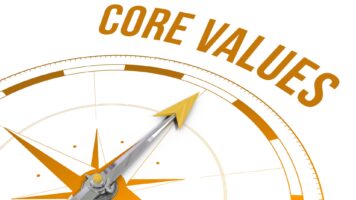The Second Half: Transition Time

Personal Development
January 9, 2013
Claudio Morelli
Topics
Coaching, Commitment, Growth, mentorshipIt has been a few months since I have retired as CEO/Superintendent of Schools and I am settling in to a life that is clearly different than the day-to-day demands, stresses, and responsibilities of leading a large organization. I have found that retiring after thirty-four years in public education has brought about feelings of unease, uncertainty, and some restlessness. I am definitely feeling a shift to a new season in my life still trying to envision what this season may bring.
Axiom suggests that organizations all go through different seasons and that the leader of the organization must define these seasons and the implications for the people in the organization. Hybels proposes five seasons each with significant signposts.
I would also contend that leaders of organizations personally move through these seasons as defined by Hybels and each has to continually reflect on what season they are in as leaders. But what happens when you are no longer leading an organization where you have had an opportunity to lead and influence people in a workplace? Four questions can assist in assessing what season you are in when this occurs and how you can continue to contribute as a leader.
As I reflect on these questions, I have realized that my decision to retire may have stopped me from leading an organization, but it has not meant that I have to quit being a leader and curtail the use of my leadership strengths to influence, impact, and lead others. In fact, this season has given me permission to rediscover and redefine my sense of purpose and mission. How I do this and what it looks like may be different; however, my mission and commitment to developing and growing other leaders has not changed and will continue. Now that I have been released from the constraints and responsibilities of a CEO's position, and after being equipped for many years as a senior leader, I now have more time to spend mentoring, guiding, and coaching other leaders. I see this as a gift and a tremendous opportunity to impact, mentor, and lead with renewed enthusiasm.
Craig Groeschel in his powerful Bridging the Generation Gap presentation at this year's Willow Creek Leadership Summit challenges senior leaders to invest in the next generation of leaders by mentoring and guiding them. He shares that you can still make a difference and engage in and develop leaders no matter what age you are. Groeschel emphatically states, "If you are not dead, you are not done. Invest in those who come behind you."
In my current season of transition I have come to the conclusion that I am going to embrace this season with passion and energy. I am not dead and I am not done. I am excited about this season of my life and am ready to let the second half begin.
What season are you in? Is it time to reflect on your mission, purpose, and commitment to leading, guiding and mentoring other leaders? How have you benefited from being led and guided by a senior leader? What are your plans for your second half? I would love to hear your thoughts.
8 Responses
Leave a Reply
Share this article
Want articles like this delivered to your inbox?
Join our mailing list & get updates via email






Hi Claudio,
Thanks for sharing this. I appreciate your candor, from the heart. I love what you mentioned about moving into a season of significance. If anything, the next phase brings with it the freedom (from time and work constraints, if nothing else) to be truly significant at what matters most to you. Good luck!
Thank you so much for your reply Jesse. Finding time to honor and use your strengths and passions are so beneficial and rewarding. I believe all of us want to do something significant in their lives. My journey to significance has so far started out well. Thanks again for your kind comments.
Regards, Claudio
Claudio,
Thanks for sharing your story and how you are embracing your current season. It is something important for all of us to do. I also see from this that you have attended Willow Creek’s Leadership Summit. It is one of my favorite leadership conferences. I always leave learning something and feeling renewed. More important things to embrace more often.
Thanks!
Jon
Thank you Jon for your comments. I actually only got to see a DVD of the Willow Creek Summit and was particularly impacted by Craig Groeschel’s presentation on mentorship. I am looking forward to the day when I can attend the Leadership Summit in person. Thanks again for your comments and your inspiring and insightful posts.
Kind regards, Claudio
Claudio,
Thanks for sharing your thoughts on the second half: transition time. Although I only had the chance to work with you for a few years, your attitude, integrity, and compassion for all things ‘good’ in educaiton has had a lasting impression on me. I have no doubt that you will continue to influence leaders in education and in other facets of life. I love your phrase “now that I have been released from the contraints and responsibilities…” Take that freedom as permission as a starting point in writing your next chapter in leadership. All the best in transition. Maybe you should come to Silver Star and enjoy some of the epic snow we are having this season.
Thank you for reminding me that leadership comes in many forms. yesterday, I read a summary of research in the Wall Street Journal that “retirees” ( a term we must retire, in my opinion) who have a mission experience better health and a better quality of life longer. We all have something to give.
Susan, you are right the term “retired” needs to disappear. I prefer to use transition. Thanks for your comments.
Claudio
Thank you Don for the encouraging and affirming comments. You hope in your leadership journey that you do influence others. In many cases you are not aware of it. I appreciate you letting me know. I am sure in your leadership journey you have influenced many and will continue to do so. All the best and thanks again.
Claudio